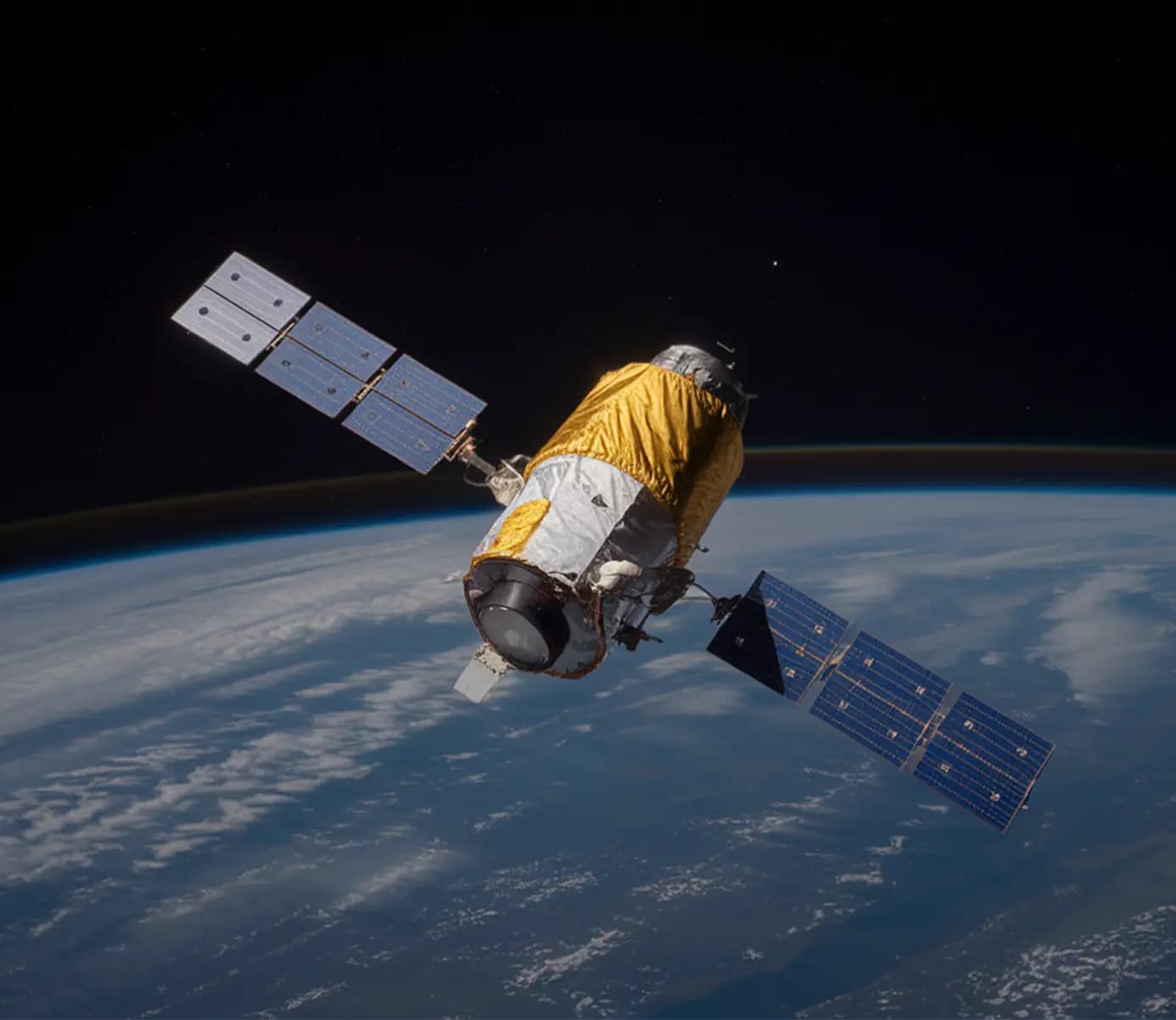
Why Don’t Satellites Fall Out of the Sky?
At SkyFi, we work with satellites daily to provide critical Earth observation data for sectors like agriculture, urban planning, and environmental monitoring. Ever wondered why these satellites remain in orbit rather than crashing down? Understanding how satellites maintain their paths above Earth is not only intriguing but essential for grasping how satellite imagery reaches us. This article will explore the mechanics of orbit, types of satellite paths, and why satellites play a crucial role in our lives.
How Do Satellites Stay in Orbit?
Satellites stay in orbit by balancing their speed with the gravitational pull of Earth. After being launched into space at high speeds by powerful rockets, satellites move fast enough that, while Earth’s gravity constantly pulls them down, they effectively keep “missing” Earth. This balance between gravity and speed allows them to maintain a stable orbit without falling.
Imagine you throw a ball horizontally. The harder you throw it, the farther it travels before hitting the ground. If you could throw it fast enough, Earth’s surface would curve away beneath it, and the ball would enter a continuous, circular path—much like an orbit. Satellites work in the same way, except they’re launched with enough velocity to keep them circling Earth indefinitely.
Why Speed Matters
A satellite’s speed is determined by its distance from Earth:
Low Earth Orbit (LEO): Satellites in LEO, around 160 to 2,000 kilometers (99 to 1,200 miles) above Earth, need to move quickly to counteract the strong gravitational pull at this altitude. These satellites often complete an orbit in about 90 minutes, making them ideal for high-resolution imaging and communication applications.
Medium Earth Orbit (MEO): These satellites orbit between 2,000 and 35,000 kilometers (1,200 to 22,000 miles) above Earth, where gravity is weaker, so they can move slower than those in LEO. MEO satellites often support navigation systems due to their moderate coverage and speed.
Geostationary Earth Orbit (GEO): GEO satellites orbit at around 35,786 kilometers (22,236 miles) above Earth’s equator. They move at the same rotational speed as Earth, making them appear stationary relative to the ground. This makes them ideal for weather monitoring and continuous communication over large areas.
Highly Elliptical Orbit (HEO): With long, oval orbits, HEO satellites offer prolonged views over specific regions, making them valuable for specialized communication needs, especially at high latitudes.
Why Don’t Satellites Need Constant Fuel?
Unlike cars that require fuel to keep moving, satellites don’t need to burn fuel to stay in orbit. The initial velocity provided by their launch carries them forward indefinitely, thanks to the vacuum of space. The only time fuel is required is for slight adjustments, like collision avoidance or fine-tuning their orbit.
Do Satellites Ever Collide?
Though space might seem empty, there’s a growing density of satellites and debris, increasing the risk of collision. Space agencies monitor satellite paths to avoid these incidents, and many satellites carry small fuel reserves for minor course adjustments. When a satellite is launched, it’s positioned in a designated path to avoid others, but these paths can shift over time, and collisions, though rare, can happen. The 2009 collision between two inactive satellites demonstrated the need for vigilant monitoring and careful path planning in space.
SkyFi’s approach ensures safe, continuous operation of its satellite services by closely working with our partners to monitor and adjust satellite positions when necessary. This helps us maintain a reliable stream of imagery for essential applications.
How Long Can Satellites Remain in Orbit?
Satellites can remain in orbit for years, decades, or even centuries, depending on their altitude. Lower orbits experience slight atmospheric drag, which gradually slows satellites until they eventually re-enter Earth’s atmosphere and burn up. Satellites in higher orbits, however, encounter minimal drag and can stay aloft for far longer.
When a satellite reaches the end of its functional life, operators may:
Move it into a “graveyard” orbit far from active satellites to prevent interference.
Allow it to gradually descend to Earth, where it safely burns up on re-entry.
Understanding Space Isn’t as Far Away as You Might Think
While space feels distant, the boundary (known as the Kármán line) is only about 100 kilometers (62 miles) above us. Satellites operate above this line, varying in altitude based on their mission. The different layers of orbits allow each satellite to serve its unique purpose, whether capturing data for agriculture, weather monitoring, or global communications.
FAQ
Do satellites ever need fuel to stay in orbit? No, satellites don’t require fuel for orbit maintenance; they rely on their initial launch velocity. Fuel is only used for minor adjustments or collision avoidance.
What happens if a satellite goes too slow? If a satellite’s speed decreases too much, it will lose its balance with gravity and eventually fall back to Earth.
How far is the closest orbit to Earth? Low Earth Orbit (LEO) starts as close as about 160 kilometers (99 miles) from Earth’s surface, making it ideal for high-speed, high-detail imaging.
Can satellites in the same orbit collide? While rare, collisions can happen. Satellites are carefully tracked, and paths are adjusted when necessary to prevent accidental contact.
How are satellites retired? Satellites can be moved to graveyard orbits or left to deorbit and burn up in the atmosphere.
SkyFi’s mission is to provide safe, reliable access to satellite data, supporting everything from urban development to environmental preservation. By working with satellite providers and constantly monitoring satellite activity, we bring the insights you need, straight from orbit, to your fingertips. With our user-friendly platform, accessing and understanding satellite data has never been easier or more essential.